Stone laminate countertops have emerged as a popular and cost-effective alternative to natural stone surfaces in modern kitchen and bathroom designs. These countertops combine the aesthetic appeal of natural stone with the practicality and affordability of laminate materials. Crafted by layering a photographic image of real stone onto a durable laminate surface, they offer homeowners the opportunity to achieve the luxurious look of granite, marble, or quartz without the associated high costs and maintenance requirements. The advancement in printing and manufacturing technologies has significantly improved the realism and texture of stone laminate countertops, making them almost indistinguishable from genuine stone at first glance.
One of the primary advantages of stone laminate countertops is their affordability. Natural stone surfaces can be prohibitively expensive, especially for large kitchen installations or extensive renovation projects. In contrast, stone laminate options provide a budget-friendly solution without compromising on style or visual appeal. This cost-effectiveness allows homeowners to allocate funds to other areas of their renovation or to opt for higher-end appliances and fixtures, achieving a balanced and cohesive design without exceeding budget constraints.
Durability is another key feature that makes stone laminate countertops an attractive choice for many households. The laminate surface is resistant to stains, scratches, and general wear and tear, making it suitable for the high-traffic and heavily utilized environments of kitchens and bathrooms. While they may not match the longevity of actual stone surfaces, with proper care and maintenance, stone laminate countertops can serve effectively for many years, retaining their appearance and functionality even under consistent use.
The installation process of stone laminate countertops is relatively straightforward and less labor-intensive compared to natural stone installations. Laminate materials are lightweight and can be easily cut and shaped to fit various countertop configurations and dimensions. This simplicity in installation not only reduces labor costs but also shortens the timeframe required to complete renovation projects. Additionally, for DIY enthusiasts, stone laminate countertops present a feasible option for self-installation, provided that the individual possesses the necessary skills and tools to execute the task correctly.
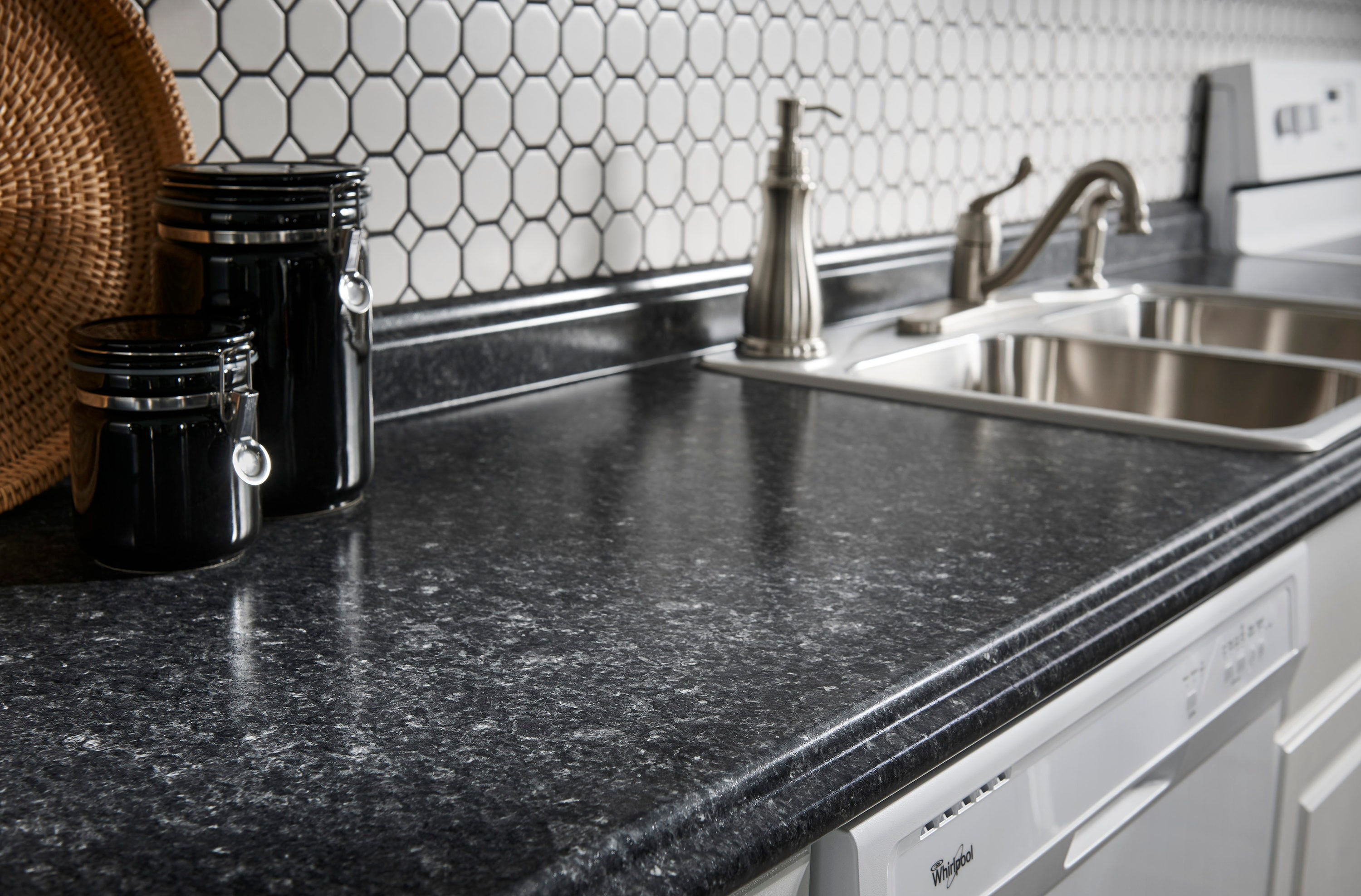
In terms of design versatility, stone laminate countertops offer an extensive range of patterns, colors, and finishes that can seamlessly integrate into diverse interior design themes. Whether aiming for the classic elegance of marble, the rugged charm of slate, or the contemporary sophistication of quartz, homeowners can find laminate options that accurately replicate these stone types. Furthermore, manufacturers continuously expand their collections, incorporating new designs and textures that cater to evolving trends and personal preferences, ensuring that there is a suitable choice for every style and taste.
Maintenance of stone laminate countertops is notably easy and convenient, contributing to their appeal among busy homeowners. The non-porous surface resists stains and does not require sealing or special treatments typically associated with natural stone upkeep. Regular cleaning involves simple wiping with mild soap and water, effectively maintaining cleanliness and hygiene. This low-maintenance characteristic not only saves time and effort but also reduces ongoing costs related to special cleaning products or professional maintenance services.
Despite their many advantages, it is important to acknowledge and consider some limitations associated with stone laminate countertops. While they are durable, they are more susceptible to heat damage compared to natural stone surfaces. Placing hot pots or pans directly on the laminate can cause discoloration or warping, necessitating the use of trivets or heat-resistant pads to protect the surface. Additionally, although resistant to minor scratches, sharp objects can cause damage, so using cutting boards is recommended to preserve the countertop’s integrity and appearance.
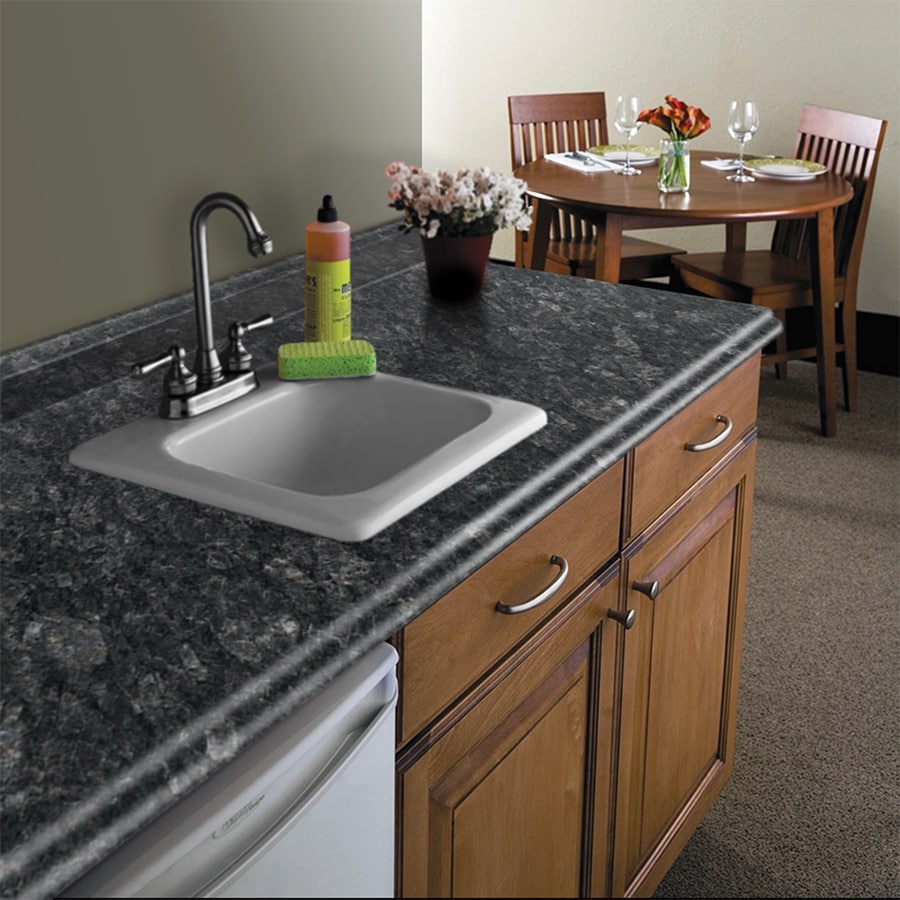
Environmental considerations also play a role in the selection of countertop materials, and stone laminate options present both pros and cons in this regard. On one hand, the production of laminate surfaces consumes fewer natural resources compared to quarrying and processing natural stone, thereby reducing environmental impact. On the other hand, laminate materials are primarily composed of plastics and resins, which may not be as eco-friendly or recyclable as other alternatives. However, some manufacturers are making strides in producing more sustainable laminate products by incorporating recycled materials and adopting greener production processes.
Customization opportunities abound with stone laminate countertops, allowing homeowners to tailor their surfaces to specific functional and aesthetic needs. Edge profiles, for instance, can be customized to various styles, from simple squared edges to more elaborate beveled or rounded designs, adding a personalized touch to the overall appearance. Additionally, laminate surfaces can be integrated with features such as integrated backsplashes or seamless sinks, enhancing both the functionality and visual cohesion of the kitchen or bathroom space.
Comparatively, stone laminate countertops offer a practical middle ground between affordability and luxury. When compared to other budget-friendly options like solid surface or tile countertops, laminates often provide a more convincing and varied stone-like appearance. Conversely, while they may not match the premium feel and durability of actual stone, they require less financial investment and are easier to install and maintain, making them a sensible choice for many homeowners seeking a balance between cost and quality.
The resale value impact of installing stone laminate countertops is also a consideration for homeowners. While natural stone countertops are often viewed as a premium feature that can enhance property value, high-quality laminate surfaces can still positively influence a home’s appeal to potential buyers. The modern, realistic designs and well-maintained condition of stone laminate countertops can contribute to an attractive and updated look, which is desirable in the real estate market, especially for cost-conscious buyers.
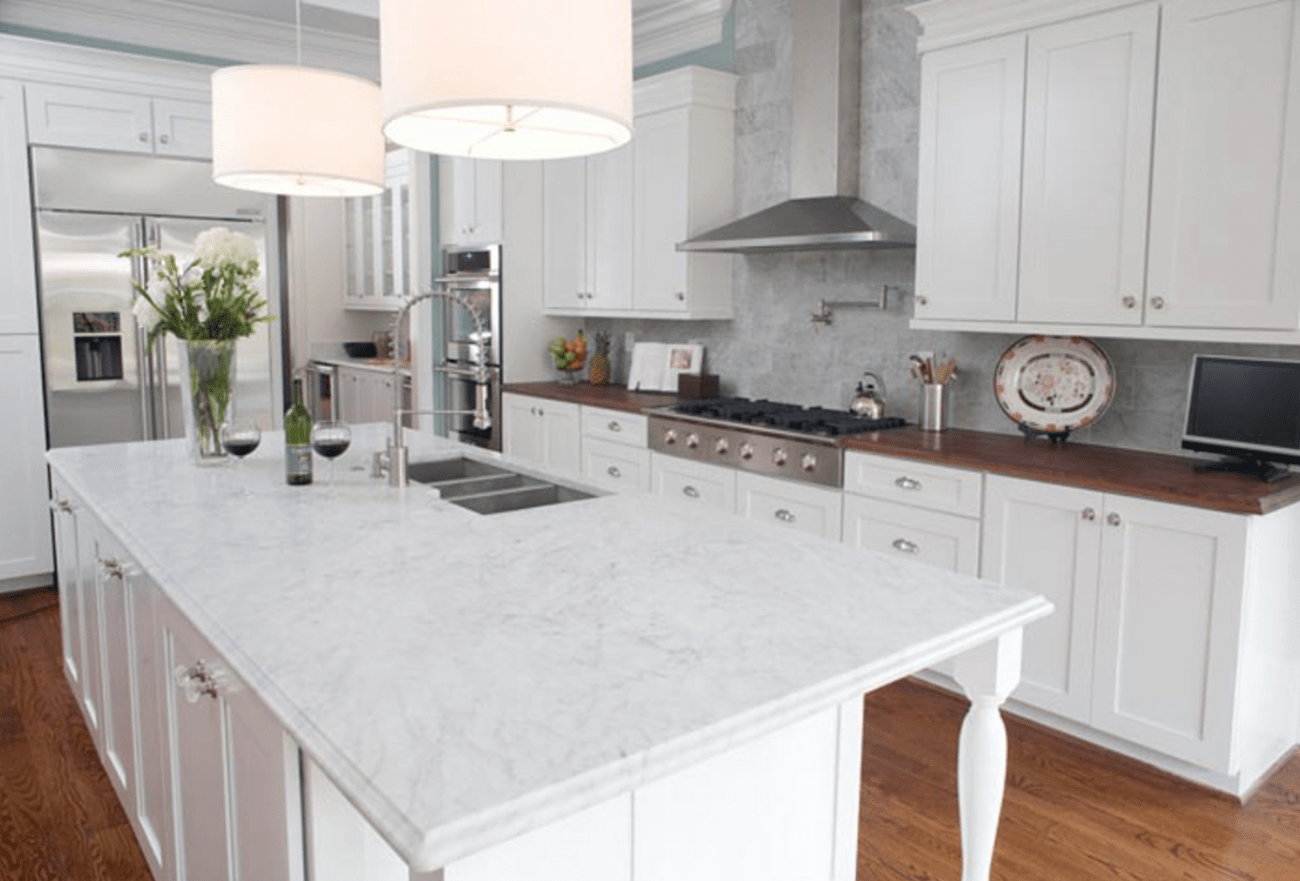
Advancements in technology have significantly improved the tactile experience of stone laminate countertops. Modern laminates not only mimic the visual patterns of natural stone but also incorporate textured surfaces that replicate the feel of materials like granite or slate. This enhancement adds depth and authenticity to the countertops, further bridging the gap between laminate and real stone surfaces and providing a more satisfying user experience.
The installation of stone laminate countertops also offers flexibility in accommodating various kitchen and bathroom layouts. Their lightweight and adaptable nature make them suitable for both standard and unconventional configurations, including islands, peninsulas, and complex corner setups. This adaptability ensures that homeowners are not limited by structural constraints when designing or renovating their spaces, allowing for creative and efficient use of available areas.
From a safety perspective, stone laminate countertops are considered a safe and hygienic option for food preparation areas. The smooth, non-porous surface resists bacteria and mold growth, contributing to a healthier kitchen environment. Additionally, some laminate products are manufactured with antimicrobial properties, providing an extra layer of protection against common household germs and enhancing the overall cleanliness of the space.
Stone laminate countertops present a compelling option for homeowners seeking the beauty and elegance of natural stone without the associated costs and maintenance demands. Their affordability, durability, design versatility, and ease of maintenance make them a practical and attractive choice for a wide range of applications and design preferences. By carefully considering their specific needs and the characteristics of laminate surfaces, individuals can make informed decisions that enhance the functionality and aesthetic appeal of their kitchens and bathrooms.

Common Mistakes to Avoid
One common mistake when choosing stone laminate countertops is overlooking the importance of quality and settling for low-end products. Not all laminates are created equal, and opting for cheaper, inferior quality materials can result in surfaces that are less durable, less realistic in appearance, and more prone to damage over time. It’s essential to research and select reputable manufacturers that offer high-quality laminates with convincing stone patterns and robust construction to ensure longevity and satisfaction with the final product.
Another frequent error is neglecting proper installation techniques, which can compromise both the appearance and functionality of the countertops. Inadequate sealing of seams, improper cutting, and incorrect adhesive application can lead to visible flaws, water damage, and reduced lifespan of the countertops. Whether opting for professional installation or a DIY approach, it’s crucial to follow manufacturer guidelines meticulously and ensure that all installation steps are performed with precision and care.
Failing to protect the laminate surface from heat and sharp objects is also a common oversight that can lead to premature damage. Unlike natural stone, laminate surfaces are sensitive to high temperatures and can be easily scratched by knives and other sharp utensils. Not using trivets for hot pots and pans or cutting boards during food preparation can result in unsightly burns and scratches that are difficult or impossible to repair, diminishing the countertop’s appearance and functionality.
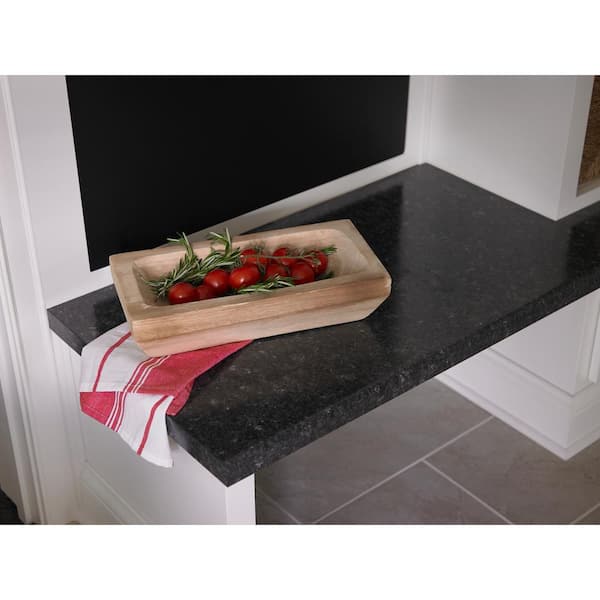
Improper maintenance and cleaning practices can also negatively impact the longevity and look of stone laminate countertops. Using abrasive cleaners, harsh chemicals, or rough scrubbing pads can scratch and dull the surface over time. It’s important to use gentle, non-abrasive cleaning agents and soft cloths or sponges to clean the countertops effectively without causing damage. Regular and proper maintenance will help preserve the surface’s shine and prevent staining and wear.
Ignoring the compatibility of stone laminate countertops with the overall design and color scheme of the space is another pitfall to avoid. Selecting a pattern or color that clashes with existing cabinetry, flooring, or decor can result in a disjointed and aesthetically unpleasing environment. Careful consideration and coordination of colors, textures, and styles are necessary to ensure that the countertops enhance and harmonize with the overall design theme of the kitchen or bathroom.
Last, miscalculating or failing to plan adequately for countertop measurements can lead to installation challenges and additional costs. Inaccurate measurements may result in ordering insufficient or excess materials and can cause fitment issues during installation. It’s vital to take precise measurements and plan the layout carefully before purchasing materials to ensure a smooth and efficient installation process, avoiding unnecessary delays and expenses.

Are stone laminate countertops durable enough for everyday kitchen use?
Yes, stone laminate countertops are designed to withstand everyday kitchen activities and are quite durable when properly maintained. They are resistant to stains, scratches, and general wear and tear, making them suitable for regular cooking and food preparation tasks. However, they are more susceptible to heat damage and deep scratches compared to natural stone surfaces. Using cutting boards for chopping and trivets for hot pots and pans can help preserve their appearance and extend their lifespan. With appropriate care, stone laminate countertops can serve effectively and maintain their aesthetic appeal for many years.
How do stone laminate countertops compare to natural stone in terms of cost and maintenance?
Stone laminate countertops are significantly more affordable than natural stone options like granite or marble, making them an attractive choice for budget-conscious homeowners. In terms of maintenance, laminates are easier to care for since they do not require sealing or special treatments that natural stones often need. Cleaning is straightforward, typically involving just mild soap and water. While natural stone offers unparalleled uniqueness and durability, it comes with higher costs and more intensive maintenance requirements. Stone laminates provide a balance between aesthetic appeal and practicality, offering a cost-effective and low-maintenance alternative to natural stone surfaces.
Can stone laminate countertops be repaired if they get damaged?
Minor damages such as small scratches or chips on stone laminate countertops can sometimes be repaired using specialized repair kits designed for laminate surfaces. These kits often include fillers and color-matching materials to conceal imperfections effectively. However, more significant damages like deep cuts, burns, or extensive delamination may be more challenging to fix and could require professional assistance or replacement of the affected section. Preventative care, such as using cutting boards and heat protection, is the best strategy to minimize the risk of damage and the need for repairs.

Are there environmentally friendly options available for stone laminate countertops?
Yes, some manufacturers offer environmentally friendly stone laminate countertops by incorporating recycled materials and utilizing sustainable production practices. These eco-friendly laminates aim to reduce environmental impact by minimizing resource consumption and waste generation during manufacturing. Additionally, opting for laminates over natural stone can be considered a greener choice as it avoids the environmental degradation associated with stone quarrying. Consumers interested in sustainable options should research and select products certified for their environmental standards and consider the full lifecycle impact of the materials used.
Can I install stone laminate countertops myself, or do I need professional installation?
Stone laminate countertops can be suitable for DIY installation, especially for individuals with some experience and the right tools. The materials are relatively lightweight and easy to work with, allowing for cutting and fitting to various configurations. However, achieving a professional-quality finish requires careful measurement, precise cutting, and proper handling of seams and edges. Mistakes during installation can lead to visible flaws and reduced durability. If you are unsure about your skills or the complexity of the project, hiring a professional installer is advisable to ensure optimal results and longevity of your countertops.
What design options are available with stone laminate countertops?
Stone laminate countertops offer a vast array of design options, replicating numerous types of natural stones such as granite, marble, quartz, and slate in various colors and patterns. Advancements in printing technology have enabled highly realistic and detailed representations of these materials, including texture and depth. Additionally, laminates come in different finishes, from glossy to matte, allowing further customization to match personal preferences and design themes. Edge profiles can also be customized, ranging from simple straight edges to more decorative beveled or rounded styles, providing ample opportunities to create a personalized and cohesive look in your kitchen or bathroom.
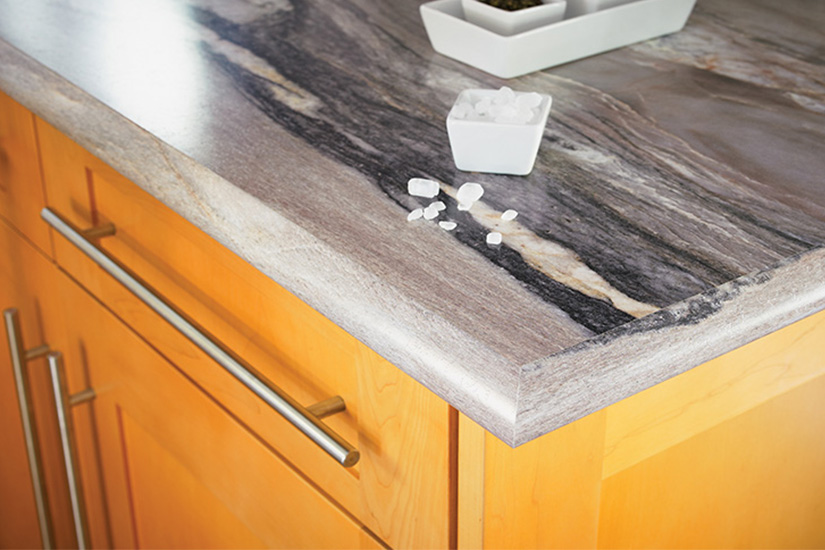
Laminate countertops love undermount sinks
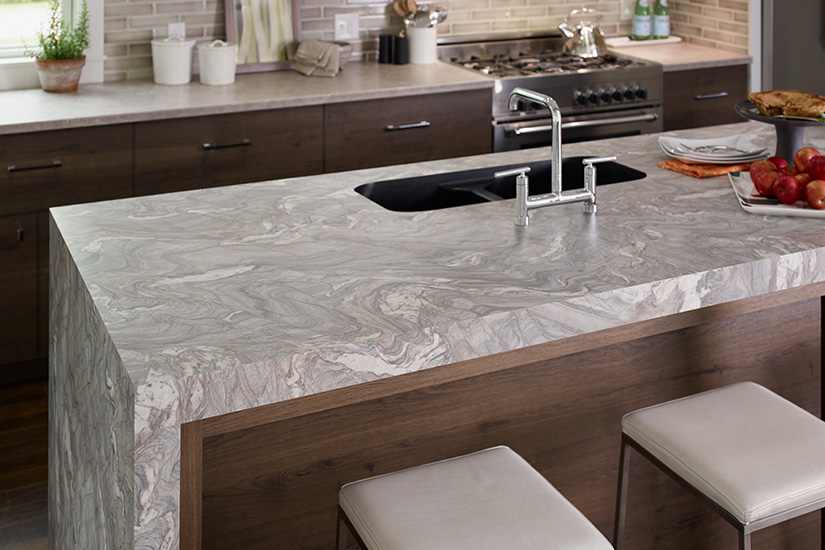
Related articles:
- Laminate Countertops Installation
- Laminate Countertop For Kitchen Island
- Kitchen Island Laminate Countertops
- Cheap Laminate Countertops
- Laminate Countertops That Look Like Stone
- Plastic Laminate Countertops
- Laminate Countertop Ideas For Kitchen
- Dark Green Laminate Countertops
- Repair Laminate Countertop Edge
- Laminate Countertops In Bathroom